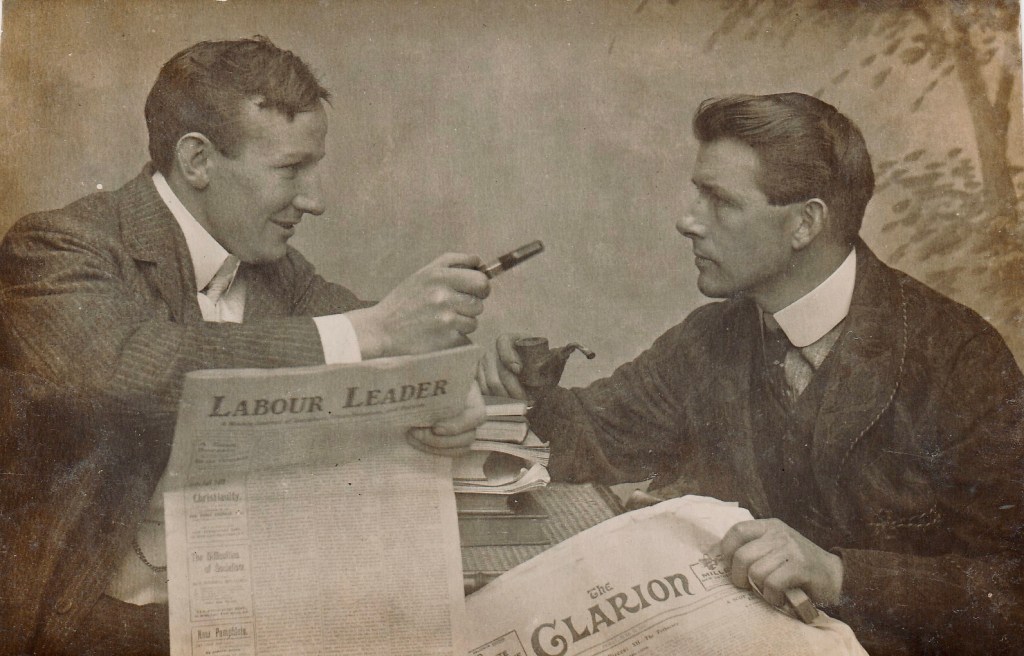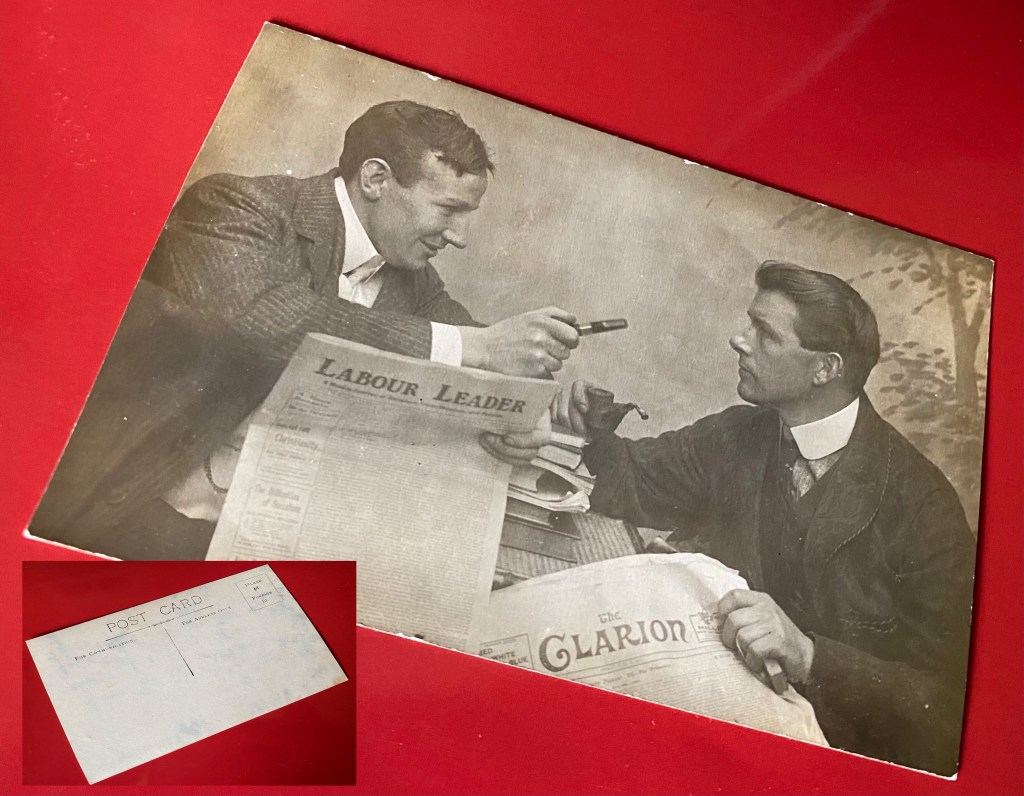
Two men sit facing one another, rival socialist newspapers in hand as they debate the issues of the day. To judge from the unconvincingly bucolic backdrop, the photograph is posed and taken in a studio. Clues in the picture itself have more to tell us about it, but the identities of the two men and the reason the photograph was taken remain a mystery.
Both the Labour Leader and the Clarion were closely associated with the Independent Labour Party, and the Labour Leader would in due course become the ILP’s official organ. But the politics and ethos of the two rivals could not have been more different.
The Labour Leader had been launched in 1887 as The Miner by Keir Hardie, but soon acquired a new name when the Scottish Labour Party affiliated to the ILP in 1893 and Hardie became its leader. The paper had a reputation for its sober, even slightly boring approach to socialism – a serious though hardly an entertaining read. By 1904, now under ILP ownership and with John Bruce Glazier as editor, the paper began to pile on readers, with its circulation rising from 13,000 to 43,000 a week by the time the editorship passed to Fenner Brockway in 1912. Brockway, a convinced pacifist, plastered his – and the paper’s – opposition to the first world war across the front page, facing prosecution in 1915 and ultimately relinquishing editorship of the paper to Katherine Glasier in 1916 to focus on anti-war work. Under her leadership, the paper supported the Bolshevik revolution of October 1917, and continued to increase sales in the post-war period.
By contrast, the Clarion was an eclectic, entertaining read that managed to put itself at the centre of a burgeoning socialist culture of cycling clubs, rambling clubs and amateur dramatic societies. The historian Margaret Cole would later remark: “There never was a paper like it. It was not in the least the preconceived idea of a socialist journal. It was not solemn; it was not highbrow … It was full of stories, jokes and verses, sometimes pretty bad verses and pretty bad jokes, as well as articles.” Launched in 1891 under Robert Blatchford, the paper swiftly reached a circulation of some 30,000 a week, rivalling that of the Leader. Yet for all the features of Clarion life that still seem attractive to many on the Left today, the paper could not sustain its popularity in the face of Blatchford’s opposition to allowing women the vote, or his support for the second Boer war (1899-1902) and first world war.
So, while the photograph here shows little animosity between the two men, in real life the differences between the two papers were real and stark. As the pointing of pipes to emphasise the points being made here suggests, the arguments could be heated.
Interestingly, although the photograph looks as though it may have been a promotional image of some sort, it was printed as a postcard. The example shown here was never used. And as to date: digitised copies of both papers in the British Newspaper Archive show that the masthead of the Clarion pictured was in use from April 1894 to August 1914; that of the Labour Leader from 1903 until well after the first world war. So the picture can be dated to some time between 1903 and August 1914 when both mastheads were in use – and when the political differences between the two papers were at their height.

Update: The image shown above can now be securely dated. Mike Sanders spotted a clue on the front page of The Clarion, where the word ‘Pothecary’ can just about be made out. The word appears just once in the British Newspaper Archives set of the paper, and is dated 14 June 1907. Adverts on the front of the Labour Leader also match. Both that weekend’s papers are shown below. Clearly that rules out any idea that the photograph illustrates differences over the second Boer war or first world war. In fact, that week’s papers have relatively little overlap of content, though on the two issues where they cover the same topics (giving space to a certain scepticism about vaccines, and the decision by Irish Nationalists to contest an upcoming by-election in Jarrow), they are broadly in agreement. More likely, then, that the photograph is intended merely to show a generic rivalry rather than a specific dispute.
